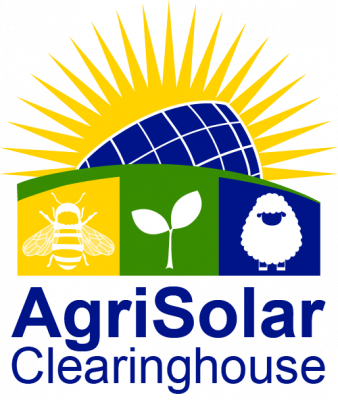This research argues that non-negligeable amounts of water can be saved due to the windbreak effect caused by vertical agrivoltaic systems.
The triple benefits of the AgriVoltaic Systems Development (AVSD) have been well demonstrated, not only for the PV electricity generation but also for reduced water evaporation, enhancing further the benefits of simultaneously crop growth on the same land area. However, the reduction rate of the water evaporation of AVSD has not been investigated in a quantitative way. Therefore, this study conducted experiments to measure water evaporation reduction under the Concentrated-lighting Agrivoltaic System (CAS) and the Even-lighting Agrivoltaic System (EAS). Evaporation containers and pans were placed in the bare soil (CK) under the CAS and the EAS. Our results showed a significant reduction in water evaporation under CAS and EAS. Cumulative soil surface evaporation of CK, CAS, and EAS for 45 days was 80.53 mm, 63.38 mm, and 54.14 mm. The cumulative water evaporation from soil and pan surfaces decreased by 21 % and 14 % (under CAS), 33 %, and 19 % (under EAS), respectively. The slope β1 ∕= 0 of simple linear regression showed a significant positive relationship between evaporation time and cumulative water evaporation. The correlation coefficient in all treatments was more than 0.91, suggesting a robust linear relationship. The feasibility of AVSD could significantly reduce irrigation water, enhance crop growth, and generate electricity simultaneously on the same agricultural land.
Agrivoltaics is a concept in which a piece of land is simultaneously used for both energy and food production by mounting photovoltaic modules at a certain height above (or in between strips of) agricultural land. A local and system-level incorporation of water management is imperative to the sustainable implementation of agrivoltaics. Water raining on the module can be gathered and used for distinct purposes: groundwater recharge, crop irrigation, and cleaning and cooling of the PV modules. This research provides an initial overview of positive and negative impacts for each water use concept and outlines issues that should be taken into consideration and the potential for research and development. Various Managed Aquifer Recharge (MAR) technologies are a way to clean and store the water periodically in an underlying aquifer. Irrigation increases yield within the plant level and therefore increases the system’s output. Thanks to the power supply generated by the PV modules, high-tech irrigation systems can be implemented in agrivoltaic systems; the special adaption of irrigation systems to agrivoltaics poses significant potential for research and development. Meanwhile, the necessity, i.e., profitability of cleaning and/ or cooling PV modules depends on local environment and economic factors. Several cleaning techniques have been developed to mitigate soiling, ranging from manual cleaning to fully automatic cleaning systems. In agrivoltaics systems, the soiling risk can increase. Semi-automatic systems seem to have the greatest potential for agrivoltaics, because they can be used with farming equipment. Multiple cooling techniques have been developed to decrease cell temperature to increase power output, with some of them involving water. Water flowing over the module surface is a promising a promising cooling technique for agrivoltaic applications. Attaching a perforated tube to the upper edge, the entire module can be covered in a thin film of water which cools very effectively (while also cleaning the surface). A closed-circuit system could be created involving the technical components used for rainwater harvesting. The economic feasibility of cooling panels in agrivoltaic systems needs to be investigated. In certain locations, rainwater-harvesting could also be relevant for ground-mounted PV systems.
